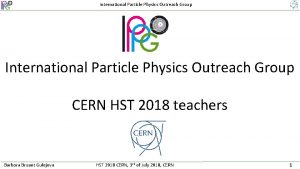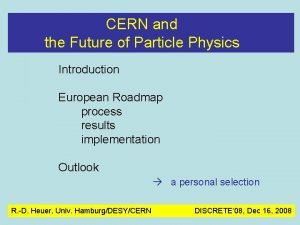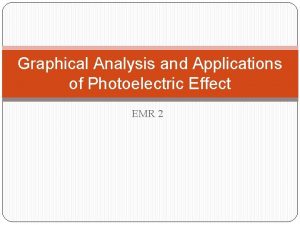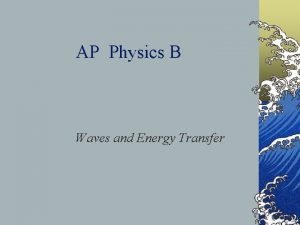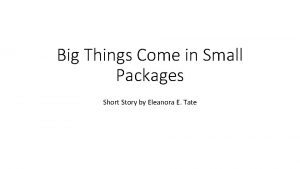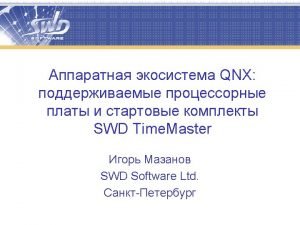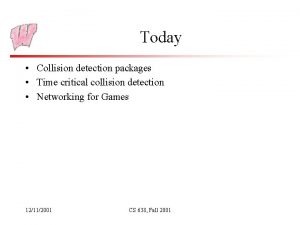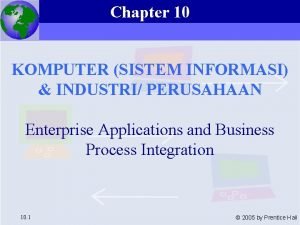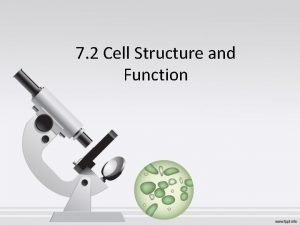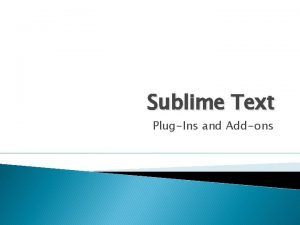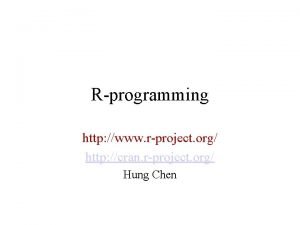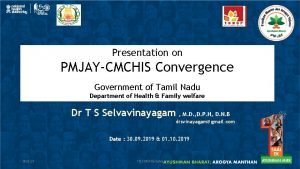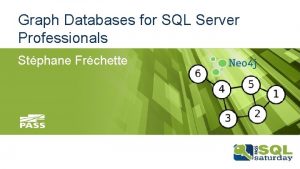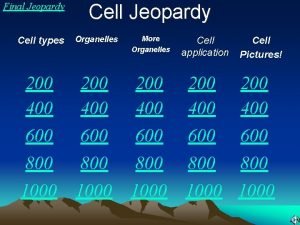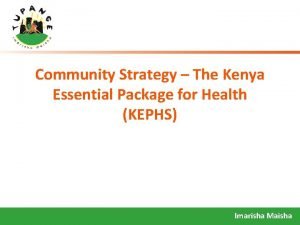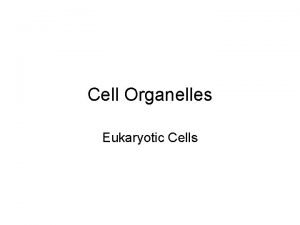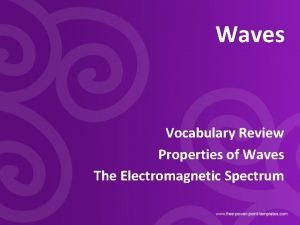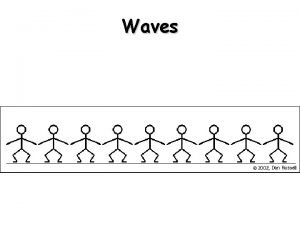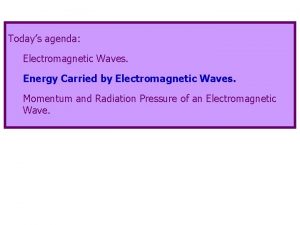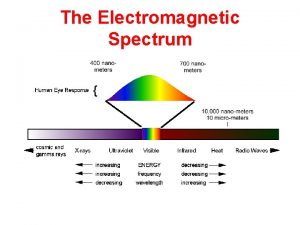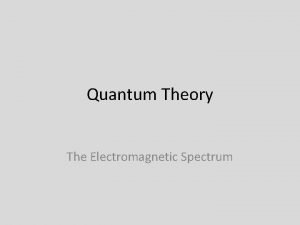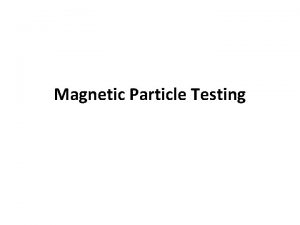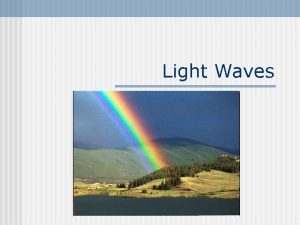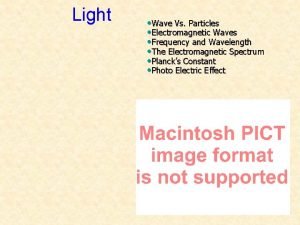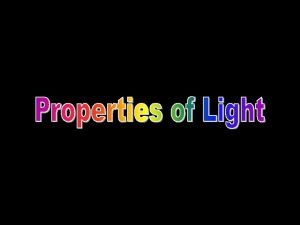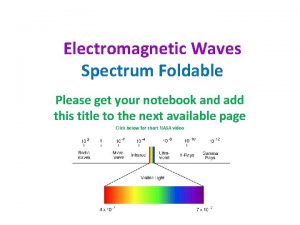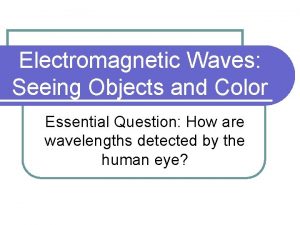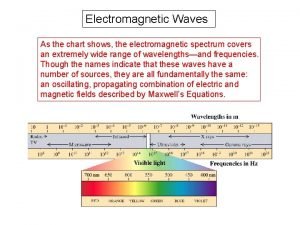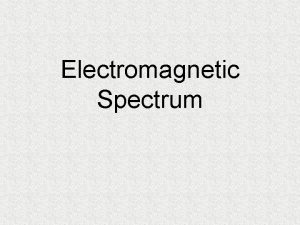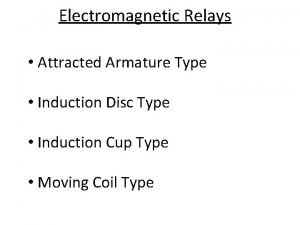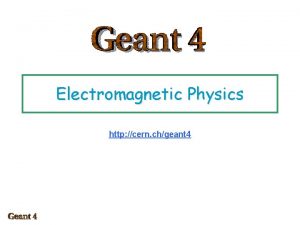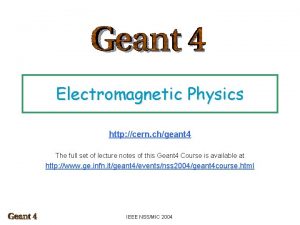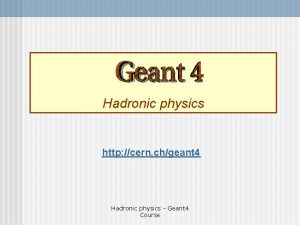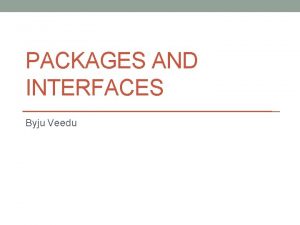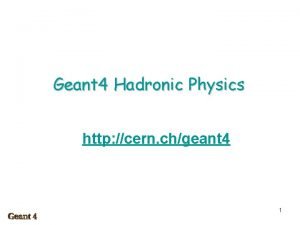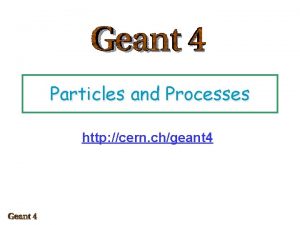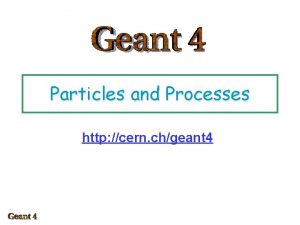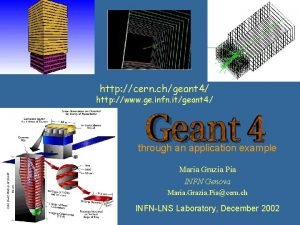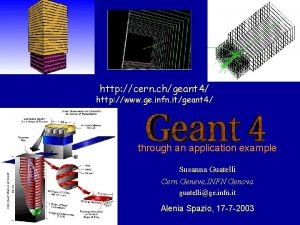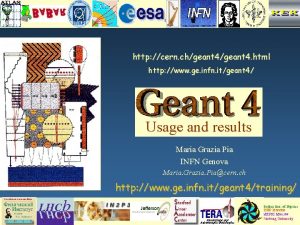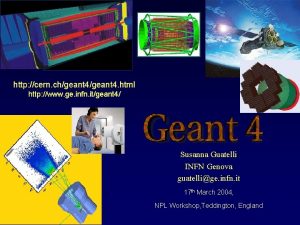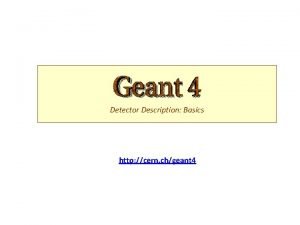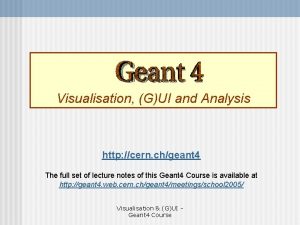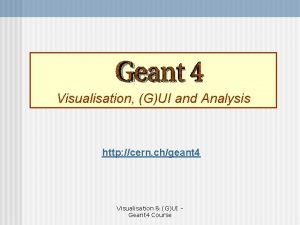Electromagnetic Physics http cern chgeant 4 Electromagnetic packages


































![Rayleigh scattering Angular distribution: F(E, q)=[1+cos 2(q)] F 2(q) – where F(q) is the Rayleigh scattering Angular distribution: F(E, q)=[1+cos 2(q)] F 2(q) – where F(q) is the](https://slidetodoc.com/presentation_image/3242bae4bc84fd14dae4b49bbd3cd68f/image-35.jpg)

































- Slides: 68

Electromagnetic Physics http: //cern. ch/geant 4

Electromagnetic packages in Geant 4 Standard Low Energy Optical Muons Different modeling approach Specialized according to particle type, energy scope

Electromagnetic physics energy loss electrons and positrons g, X-ray and optical photons muons charged hadrons ions î High energy extensions – needed for LHC experiments, cosmic ray experiments… î Low energy extensions – fundamental for space and medical applications, dark matter and experiments, antimatter spectroscopy etc. î Alternative models for the same process Multiple scattering Bremsstrahlung Ionisation Annihilation Photoelectric effect Compton scattering Rayleigh effect g conversion e+e pair production Synchrotron radiation Transition radiation Cherenkov Refraction Reflection Absorption Scintillation Fluorescence Auger All obeying to the same abstract Process interface: transparent to tracking

Standard Electromagnetic Physics The training material of this section on Geant 4 Standard Electromagnetic Physics has been provided by Michel Maire (LAPP)

Standard electromagnetic physics in Geant 4 The model assumptions are: The projectile has energy 1 ke. V Atomic electrons are quasi free: their binding energy is neglected (except for the photoelectric effect) The atomic nucleus is free: the recoil momentum is neglected Matter is described as homogeneous, isotropic, amorphous

Compton scattering

Standard Compton scattering in Geant 4

g conversion

Standard total cross section per atom in Geant 4

Ionisation

Mean rate of energy loss

Fluctuations in energy loss The model in Geant 4

Production of d rays 2000 Me. V electron, proton and a in Al

Bremsstrahlung Differential cross section

Emission of energetic photons and truncated energy loss rate 1 Me. V cut 10 ke. V cut

LPM effect LPM 10 Ge. V e in Pb, g spectrum

Multiple Coulomb scattering

Particle transport in Monte Carlo simulation

Multiple scattering in Geant 4 More details in Geant 4 Physics Reference Manual

Cherenkov radiation Cherenkov emission from optical photons in Geant 4

Optical photons Production of optical photons in detectors is mainly due to Cherenkov effect and scintillation Processes in Geant 4: in flight absorption Rayleigh scattering medium boundary interactions (reflection, refraction) Photon entering a light concentrator CTF-Borexino

Muons 1 ke. V up to 1000 Pe. V scale simulation of ultra-high energy and cosmic ray physics High energy extensions based on theoretical models 45 Ge. V muons

Direct e+e- pair creation by muon

Photo Absorption Ionisation (PAI) Model Ionisation energy loss produced by charged particles in thin layers of absorbers 3 Ge. V/c p in 1. 5 cm Ar+CH 4 5 Ge. V/c p in 20. 5 mm Si Ionisation energy loss distribution produced by pions, PAI model

Low Energy Electromagnetic Physics More information is available from the Geant 4 Low Energy Electromagnetic Working Group web site http: //www. ge. infn. it/geant 4/low. E/

What is A package in the Geant 4 electromagnetic package – geant 4/source/processes/electromagnetic/lowenergy/ A set of processes extending the coverage of electromagnetic interactions in Geant 4 down to “low” energy – 250 e. V (in principle even below this limit)/100 ev for electrons and photons – down to the approximately the ionisation potential of the interacting material for hadrons and ions A set of processes based on detailed models – shell structure of the atom – precise angular distributions Complementary to the “standard” electromagnetic package

Overview of physics Compton scattering Rayleigh scattering Photoelectric effect Pair production In progress – More precise angular distributions (Rayleigh, photoelectric, Bremsstrahlung etc. ) – Polarised g conversion, photoelectric Bremsstrahlung Ionisation in two “flavours” of models: Polarised Compton • based on the Livermore Library • à la Penelope + atomic relaxation – fluorescence – Auger effect following processes leaving a vacancy in an atom Development plan – Driven by user requirements – Schedule compatible with available resources

Software Process A rigorous approach to software engineering in support of a better quality of the software especially relevant in the physics domain of Geant 4 -Low. E EM several mission-critical applications (space, medical…) Spiral approach A life cycle model that is both iterative and incremental Collaboration wide Geant 4 software process, tailored to the specific projects Public URD Huge effort invested into SPI l l started from level 1 (CMM) in very early stages: chaotic, left to heroic improvisation current status Full traceability through UR/OOD/implementation/test Testing suite and testing process Public documentation of procedures Defect analysis and prevention etc. …

User requirements Various methodologies adopted to capture URs Elicitation through interviews and surveys l User Requirements useful to ensure that UR are complete and there is wide agreement Joint workshops with user groups Use cases Analysis of existing Monte Carlo codes Study of past and current experiments Direct requests from users to WG coordinators WG e h t d on e t s o P site web

Low. E processes based on Livermore Library

Photons and electrons Based on evaluated data libraries from LLNL: different approach w. r. t. Geant 4 standard e. m. package – EADL (Evaluated Atomic Data Library) – EEDL (Evaluated Electrons Data Library) – EPDL 97 (Evaluated Photons Data Library) especially formatted for Geant 4 distribution (courtesy of D. Cullen, LLNL) Validity range: 250 e. V 100 Ge. V – The processes can be used down to 100 e. V, with degraded accuracy – In principle the validity range of the data libraries extends down to ~10 e. V Elements Z=1 to Z=100 – Atomic relaxation: Z > 5 (transition data available in EADL)

Calculation of cross sections Interpolation from the data libraries: E 1 and E 2 are the lower and higher energy for which data (s 1 and s 2) are available Mean free path for a process, at energy E: ni = atomic density of the ith element contributing to the material composition

Photons

Compton scattering Klein Nishina cross section: Energy distribution of the scattered photon according to the Klein-Nishina formula, multiplied by scattering function F(q) from EPDL 97 data library The effect of scattering function becomes significant at low energies – suppresses forward scattering Angular distribution of the scattered photon and the recoil electron also based on EPDL 97
![Rayleigh scattering Angular distribution FE q1cos 2q F 2q where Fq is the Rayleigh scattering Angular distribution: F(E, q)=[1+cos 2(q)] F 2(q) – where F(q) is the](https://slidetodoc.com/presentation_image/3242bae4bc84fd14dae4b49bbd3cd68f/image-35.jpg)
Rayleigh scattering Angular distribution: F(E, q)=[1+cos 2(q)] F 2(q) – where F(q) is the energy dependent form factor obtained from EPDL 97 This process is only available in the lowenergy package – Not available in the standard package

Photoelectric effect Cross section – Integrated cross section (over the shells) from EPDL + interpolation – Shell from which the electron is emitted selected according to the detailed cross sections of the EPDL library Final state generation – Various angular distribution generators (“naïve”, Sauter Gavrila, Gavrila) Deexcitation via the atomic relaxation sub process – Initial vacancy + following chain of vacancies created Improved angular distribution in preparation

g conversion The secondary e and e+ energies are sampled using Bethe Heitler cross sections with Coulomb correction e and e+ assumed to have symmetric angular distribution Energy and polar angle sampled w. r. t. the incoming photon using Tsai differential cross section Azimuthal angle generated isotropically Choice of which particle in the pair is e or e+ is made randomly

Photons: mass attenuation coefficient Comparison against NIST data NIST XCOM 2 N L=13. 1 – =20 p=0. 87 G 4 Standard 2 N S=23. 2 – =15 p=0. 08 G 4 Low. E accuracy ~ 1%

Photons, evidence of shell effects Photon transmission, 1 mm Pb Photon transmission, 1 mm Al

Polarisation Cross section: x Scattered Photon Polarization 250 e. V 100 Ge. V x h 0 O h a A z C y 100 ke. V small large Polar angle Azimuthal angle Polarization vector 1 Me. V small More details: talk on large Low Energy Polarised Compton 10 Me. V small Geant 4 Low Energy Electromagnetic Physics large Other polarised processes under development

Polarisation theory 500 million events simulation Polarisation of a non polarised photon beam, simulation and theory Ratio between intensity with perpendicular and parallel polarisation vector w. r. t. scattering plane, linearly polarised photons

Electron Bremsstrahlung Parameterisation of EEDL data – 16 parameters for each atom – At high energy the parameterisation reproduces the Bethe Heitler formula – Precision is ~ 1. 5 % Plans – Systematic verification over Z and energy

Bremsstrahlung Angular Distributions Three Low. E generators available in GEANT 4 6. 0 release: G 4 Modified. Tsai, G 4 Generator 2 BS and G 4 Generator 2 BN allows a correct treatment at low energies (< 500 ke. V) Most stuff presented in 2003 GEANT 4 Workshop Vancouver

Electron ionisation Parameterisation based on 5 parameters for each shell Precision of parametrisation is better then 5% for 50 % of shells, less accurate for the remaining shells Work in progress to improve the parameterisation and the performance

Electrons: range Range in various simple and composite materials Compared to NIST database NIST ESTAR G 4 Standard G 4 Low. E Al

Electrons: d. E/dx Ionisation energy loss in various materials Compared to Sandia database More systematic verification planned Also Fe, Ur

Electrons, transmitted 20 ke. V electrons, 0. 32 and 1. 04 mm Al

Geant 4 validation vs. NIST database All Geant 4 physics models of electrons, photons, protons and a compared to NIST database – Photoelectric, Compton, Rayleigh, Pair Production cross sections – Photon attenuation coefficients – Electron, proton, a stopping power and range Quantitative comparison – Statistical goodness of fit tests Other validation projects in progress Electromagnetic validation K. Amako et al. , Comparison of Geant 4 electromagnetic physics models against the NIST reference data IEEE Trans. Nucl. Sci. , Vol. 52, Issue 4, Aug. 2005, 910 918

Hadrons and ions Variety of models, depending on – energy range – particle type – charge Composition of models across the energy range, with different approaches – analytical – based on data reviews + parameterisations Specialised models for fluctuations Open to extension and evolution

Hadrons and ions Physics models handled through abstract classes Algorithms encapsulated in objects Transparency of physics, clearly exposed to users Interchangeable and transparent access to data sets

Positive charged hadrons Bethe-Bloch model of energy loss, E > 2 Me. V • 5 parameterisation models, E < 2 Me. V based on Ziegler and ICRU reviews • 3 models of energy loss fluctuations Density correction for high energy Shell correction term for intermediate energy • Chemical effect for compounds Nuclear stopping power PIXE included Ziegler and ICRU, Fe Ziegler and ICRU, Si Spin dependent term Barkas and Bloch terms Straggling Stopping power Z dependence for various energies Nuclear stopping power

The precision of the stopping power simulation for protons in the energy from 1 ke. V to 10 Ge. V is of the order of a few per cent Bragg peak (with hadronic interactions)

Positive charged ions • • • Scaling: 0. 01 < < 0. 05 parameterisations, Bragg peak based on Ziegler and ICRU reviews < 0. 01: Free Electron Gas Model Effective charge model Nuclear stopping power Deuterons

Models for antiprotons > 0. 5 0. 01 < < 0. 5 < 0. 01 Bethe Bloch formula Quantum harmonic oscillator model Free electron gas mode Proton G 4 Antiproton Antiproto n exp. data Antiproton from Arista et. al Proton G 4 Antiproton Antiproto n exp. data et. Antiproton from Arista al

Atomic relaxation

Fluorescence Microscopic validation: against reference data Spectrum from a Mars-simulant rock sample Fe lines Ga. As lines Scattered photons Experimental validation: test beam data, in collaboration with ESA Advanced Concepts & Science Payload Division

Auger effect New implementation, validation in progress Auger electron emission from various materials Sn, 3 ke. V photon beam, electron lines w. r. t. published experimental results

PIXE New model based on experimental data – Parameterisation of Paul & Sacher data library for ionisation cross sections – Uses the EADL based package of atomic deexcitation for the generation of fluorescence and Auger secondary products Current implementation: protons, K shell Coming in future: protons, L shell and a, K shell Example of p ionisation cross section, K shell Geant 4 parameterisation (solid line) Experimental data

Processes à la Penelope The whole physics content of the Penelope Monte Carlo code has been re engineered into Geant 4 (except for multiple scattering) – processes for photons: release 5. 2, for electrons: release 6. 0 Physics models by F. Salvat et al. Power of the OO technology: – extending the software system is easy – all processes obey to the same abstract interfaces – using new implementations in application code is simple Profit of Geant 4 advanced geometry modeling, interactive facilities etc. – same physics as original Penelope

In progress Extensions down to the e. V scale – in water (for radiobiology studies) – in semiconductor materials (for radiation damage to components) Difficult domain – models must be specialised by material – cross sections, final state generation, angular distributions

Low Energy Physics extensions Specialised processes down to the e. V scale – at this scale physics processes depend on material, phase etc. – in progress: Geant 4 processes in water at the e. V scale – release June 2006 Processes for other material than water to follow – interest for radiation effects on components Current status

Cross sections Process kinematics Final state generation

Elastic scattering Total cross section ● Brenner ● Emfietzoglou Phys. Med. Biol. 45 (2000) 3171 3194 Solid line: our model Angular distribution J. Phys. D 33 (2000) 932 944 y r a n limi Pre 10 e. V 100 e. V 200 e. V 500 e. V 1 ke. V

Validation of Geant 4 physics models Geant 4 Physics Book – A project in progress to document Geant 4 physics validation – Published in “chapters” as individual papers K. Amako, S. Guatelli, V. N. Ivanchenko, M. Maire, B. Mascialino, K. Murakami, P. Nieminen, L. Pandola, S. Parlati, M. G. Pia, M. Piergentili, T. Sasaki, L. Urban Comparison of Geant 4 electromagnetic physics models against the NIST reference data IEEE Trans. Nucl. Sci. , Vol. 52, Issue 4, Aug. 2005, 910 918 The paper provides guidance to users to select the models most appropriate to a given application

NIST Test Photon Mass Attenuation Coefficient Photon Partial Interaction Coefficient – related to the cross section of a specific photon interaction process Electron CSDA range and Stopping Power Proton CSDA range and Stopping Power a CSDA range and Stopping Power Elements Be, Al, Si, Fe, Ge, Ag, Cs, Au, Pb, U Geant 4 models: electrons and photons (span the periodic element table) Energy range photon 1 ke. V – 100 Ge. V electron 10 ke. V – 1 Ge. V proton 1 ke. V – 10 Ge. V a 1 ke. V – 1 Ge. V Simulation configuration reproducing NIST conditions (ionisation potential, fluctuations, production of secondaries etc. ) Standard Low Energy EEDL/EPDL Low Energy Penelope Geant 4 models: protons and a Standard Low Energy ICRU 49 Low Energy Ziegler 1977 Low Energy Ziegler 1985 Low Energy Ziegler 2000 (Low Energy: free electron gas + parameterisations + Bethe Bloch)

The problem of validation: finding reliable data Note: Geant 4 validation is not always easy Backscattering low energies - Au experimental data often exhibit large differences!

To learn more Geant 4 Physics Reference Manual Application Developer Guide http: //www. ge. infn. it/geant 4/low. E

Summary OO technology provides the mechanism for a rich set of electromagnetic physics models in Geant 4 – further extensions and refinements are possible, without affecting Geant 4 kernel or user code Two main approaches in Geant 4: – Standard package – Low Energy package each one offering a variety of models for specialised applications Extensive validation activity and results More on Physics Reference Manual and web site
 Cern particle physics
Cern particle physics Cern particle physics
Cern particle physics Http //mbs.meb.gov.tr/ http //www.alantercihleri.com
Http //mbs.meb.gov.tr/ http //www.alantercihleri.com Siat.ung.ac.id
Siat.ung.ac.id Kcvs.ca photoelectric effect
Kcvs.ca photoelectric effect Http://www.colorado.edu/physics/phet
Http://www.colorado.edu/physics/phet Spectrum mi plan latino price
Spectrum mi plan latino price Tbilisi tourism packages
Tbilisi tourism packages Ssis unit testing
Ssis unit testing Accesssecure pak
Accesssecure pak Iwp meaning in construction
Iwp meaning in construction Word processing packages
Word processing packages Big things come in small packages setting
Big things come in small packages setting Unified products and services tarpaulin
Unified products and services tarpaulin Race sponsorship proposal
Race sponsorship proposal Security training and threat awareness
Security training and threat awareness London corporate packages football
London corporate packages football Activity package
Activity package Gis software packages
Gis software packages Unlike application software programs
Unlike application software programs Zscaler ticket
Zscaler ticket Le meridien cairo airport wedding packages
Le meridien cairo airport wedding packages Board support packages
Board support packages Big things come in small packages
Big things come in small packages Ecommerce packages 2
Ecommerce packages 2 Time-critical packages
Time-critical packages Amelia packages
Amelia packages Smd ic packages
Smd ic packages All crm packages contain modules for prm and erm.
All crm packages contain modules for prm and erm. Purpose of endoplasmic reticulum
Purpose of endoplasmic reticulum Technical data package
Technical data package Dts xchange
Dts xchange Prefixr.com cross-browser
Prefixr.com cross-browser Cran rproject org web packages
Cran rproject org web packages Alfa waffer
Alfa waffer One week carlos bought 2 packages of dog bones
One week carlos bought 2 packages of dog bones Pmjay cmchis
Pmjay cmchis Sqlsaturday
Sqlsaturday Bsd packages
Bsd packages Organelle that modifies packages and transports
Organelle that modifies packages and transports Kenya high priority health packages
Kenya high priority health packages Cilia analogy
Cilia analogy Abb connectivity packages
Abb connectivity packages Modern physics vs classical physics
Modern physics vs classical physics University physics with modern physics fifteenth edition
University physics with modern physics fifteenth edition Physics ia format
Physics ia format Electromagnetic waves vocabulary
Electromagnetic waves vocabulary High and low frequency waves
High and low frequency waves Sound waves are longitudinal waves true or false
Sound waves are longitudinal waves true or false Examples of mechanical waves
Examples of mechanical waves Electromagnetic waves def
Electromagnetic waves def Mechanical waves and electromagnetic waves similarities
Mechanical waves and electromagnetic waves similarities Em wave energy density
Em wave energy density Longest to shortest wavelength
Longest to shortest wavelength The electromagnetic spectrum includes
The electromagnetic spectrum includes Em spectrum song lyrics
Em spectrum song lyrics Wavelength of electromagnetic radiation formula
Wavelength of electromagnetic radiation formula Difference between matter waves and electromagnetic waves
Difference between matter waves and electromagnetic waves Electromagnetic particle inspection
Electromagnetic particle inspection Electromagnetic waves characteristics
Electromagnetic waves characteristics Electromagnetic waves frequency
Electromagnetic waves frequency Orbital notation chlorine
Orbital notation chlorine Mechanical vs electromagnetic waves
Mechanical vs electromagnetic waves Mechanical waves and electromagnetic waves similarities
Mechanical waves and electromagnetic waves similarities Electromagnetic spectrum foldable
Electromagnetic spectrum foldable Electromagnetic waves seeing objects and color
Electromagnetic waves seeing objects and color Pie graph of electromagnetic waves
Pie graph of electromagnetic waves Characteristics of gamma rays
Characteristics of gamma rays Induction disc type relay
Induction disc type relay
